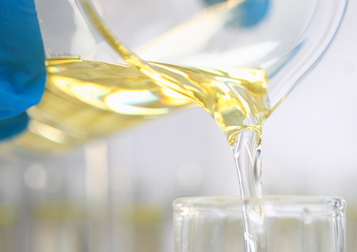
FORMULATORS MAYBE MISSING EXCELLENT NATURAL LUBRICITY COMPONENTS

Blown Rapeseed oil (BRO). It’s been around for years, but no-one really understands it’s structure and until we sent samples to BFB, not many people knew of their physical properties. Please download our product range listing typical properties. As far as we can ascertain, BRO’s are produced by passing hot air through rapeseed oil and the trick is to know when to stop as it self thickens with time. It’s quite remarkable how these products have been overlooked, usually in preference for TMP trioleates. BRO’s are available in a wide range of viscosities, have excellent VI, high flash points and reasonable pour points. In fact a personal favourite is BRO90 for use in neat cutting oils, forming oils etc. We’ve used it for 30 years, but never knew it’s viscosity in centistokes or pour point until recently. Similarly, we were puzzled why on Continental Europe BRO26 was favoured until we figured out it’s main use was as a chain saw lubricant.
And there’s not only Blown Rapeseed Oils. You can ‘blow’ most crop oils with Blown Castor Oil and Blown Soya Oil being common types – though not seen used in lubricants and greases.
It’s been postulated that when triglycerides are ‘blown’ an oxygen bridge is formed linking molecules and leading to an increase in viscosity. We don’t know, sounds logical, but then why the self thickening with time ?
Related to “blown oils” are Stand Oils. Again mainly using crop triglycerides, these are made by heating the oil in an anaerobic environment with heating. Some have suggested a catalyst is used, we don’t know. However, the process thickens the oils and it’s postulated that the oils thicken because of cross linking via the double bonds. We run oxidation tests comparing many blown and stand oils and the results are quite surprising – see them in the Knowledge Bank.



